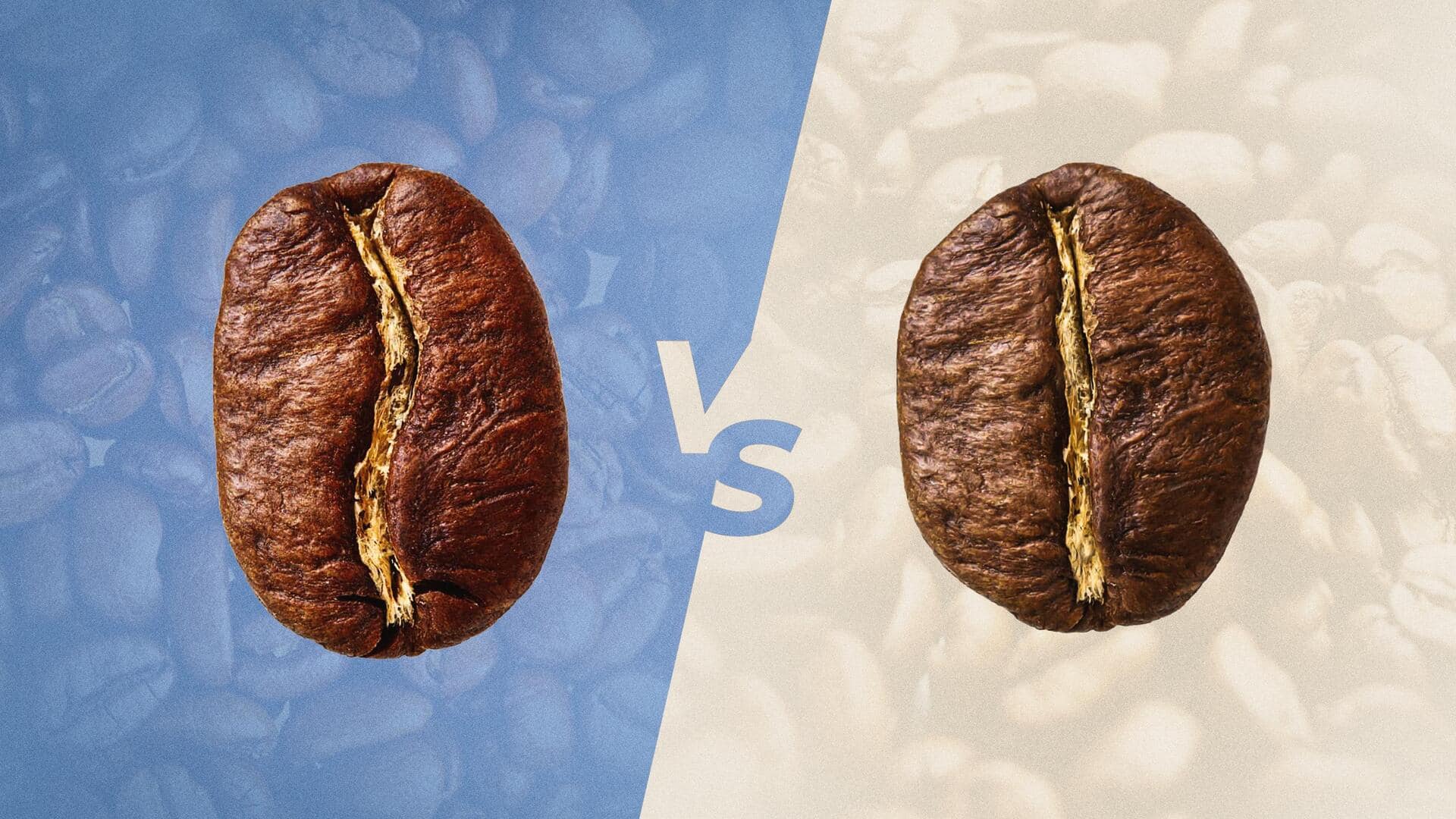
Arabica v/s Robusta coffee beans: How to differentiate
What's the story
Arabica and Robusta are the two primary species of coffee beans, and they differ in terms of flavor, caffeine content, growing conditions, bean shape, acidity, and price. Coffee enthusiasts usually have preferences for one or the other based on their taste. Some coffee blends also incorporate both types to achieve a desired flavor balance. Let us understand their differences based on certain factors.
Taste
Flavor profile
Arabica beans are known for their smoother, milder, and more complex flavor profile. They often have floral, fruity, and acidic notes, making them popular among coffee connoisseurs. Robusta beans, on the other hand, have a stronger, more bitter taste with nutty or woody notes. Thus Robusta is often considered to have a less refined flavor compared to Arabica.
Conditions
Varying growing conditions
Arabica coffee plants are more delicate and require specific conditions to thrive. They are typically grown at higher elevations with cooler temperatures, which makes them more susceptible to pests and diseases. Robusta coffee plants are hardier and can grow at lower altitudes with higher temperatures. This resilience makes it easier to cultivate them. However, it can result in a less complex flavor.
Caffeine
Caffeine content and acidity
Robusta beans typically contain more caffeine than Arabica beans. Robusta coffee can have almost double the caffeine content of Arabica coffee. This higher caffeine content contributes to Robusta's stronger and more bitter taste. Whereas, Arabica coffee tends to have a brighter acidity compared to that of Robusta coffee. The acidity in Arabica contributes to its more complex flavor profile.
Price
Appearance and price
Arabica beans are generally oval-shaped with a curved crease on one side, while Robusta beans are rounder and smaller in comparison. The differences in the shape of coffee beans can affect the grind size and brewing process. Arabica coffee is usually pricier than Robusta coffee due to its more desirable flavor characteristics and the challenges associated with its cultivation.